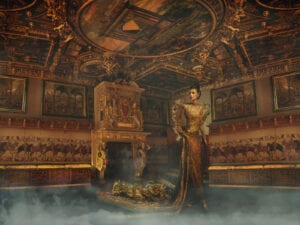Finland’s Backlight Photo Festival marks its 30th anniversary and 100 years of independence with a touring exhibition of seven Finnish artists, which will visit venues in Hungary, Austria, Slovenia, Croatia, Slovakia, Lithuania and Latvia. During September it can be seen at Organ Vida in Zagreb, Croatia and M. Žilinskas Art Gallery in Kaunas, Lithuania. Finland became an independent state in the wake of the 1917 Russian Revolution, following a long history of having its own identity obscured by the political, cultural and linguistic domination of neighbours Sweden and Russia.
Today, it is often a subject of fascination to many outsiders for its seemingly utopian combination of a Nordic welfare state with an advanced economy, leaving to world-leading standards of quality of life on metrics such as education and civil liberties. The work considers the experience of independence and how cultural traditions and memories can influence ways of seeing ourselves and others, as well as examining and critiquing the ideas around nationalism and national identity – themes that resonate strongly in the countries the exhibition is touring, with their own recent histories of being on the fringe of the Soviet power bloc.
The exhibition further addresses how national identity can both defend and conflict with individual freedom through generating new structures of power, conformity and acceptability. Yet, at the same time, independence and a sense of identity and belonging create a feeling of comfort and refuge, an emotional bond and the idea of a place to which one is always able to return. In Juha Suonpää’s series Holy Melancholy, Santa Claus is seen as an allegory for being Finnish, and through his familiar image, stereotypes are deconstructed. Juuso Westerlund’s Jackpot is full of longing and gloom, and dreams waiting to be fulfilled. Meanwhile, the virulent food aid bags of Sara Hornig’s Our Daily Bread series contrast and challenge the public image of Finland with their air of submissive despair – even in this modern welfare state people still go hungry.
A culture that encourages freedom of expression enables a polyphonic national identity. Yet, at the same time, open public debate can paradoxically lead to a narrowing of the range of acceptable opinions and entrench new power structures. Both Harri Pälviranta’s With guns one can and Juha Arvid Helminen’s The Invisible Empire discuss violence and the ways in which fear of becoming an outsider can narrow self-determination. In Riitta Päiväläinen’s Imaginary Meetings, traces and hints
of previous events in a landscape leave the viewer striving to construct narratives. Similarly, in 100 Hectares of Understanding Jaakko Kahilaniemi attempts to understand a tract of forest and what nature can offer to urbanised people. The tour will continue to the Latvian Museum of Photography in Riga (October), Photoport Bratislava (November), and finally the Photography Museum in Šiauliai (November).
Touring, various locations. Until November. For more information: www.backlight.fi
Credits:
1. Julien Lombardi, Dérive. (2010). Courtesy of the artist.





